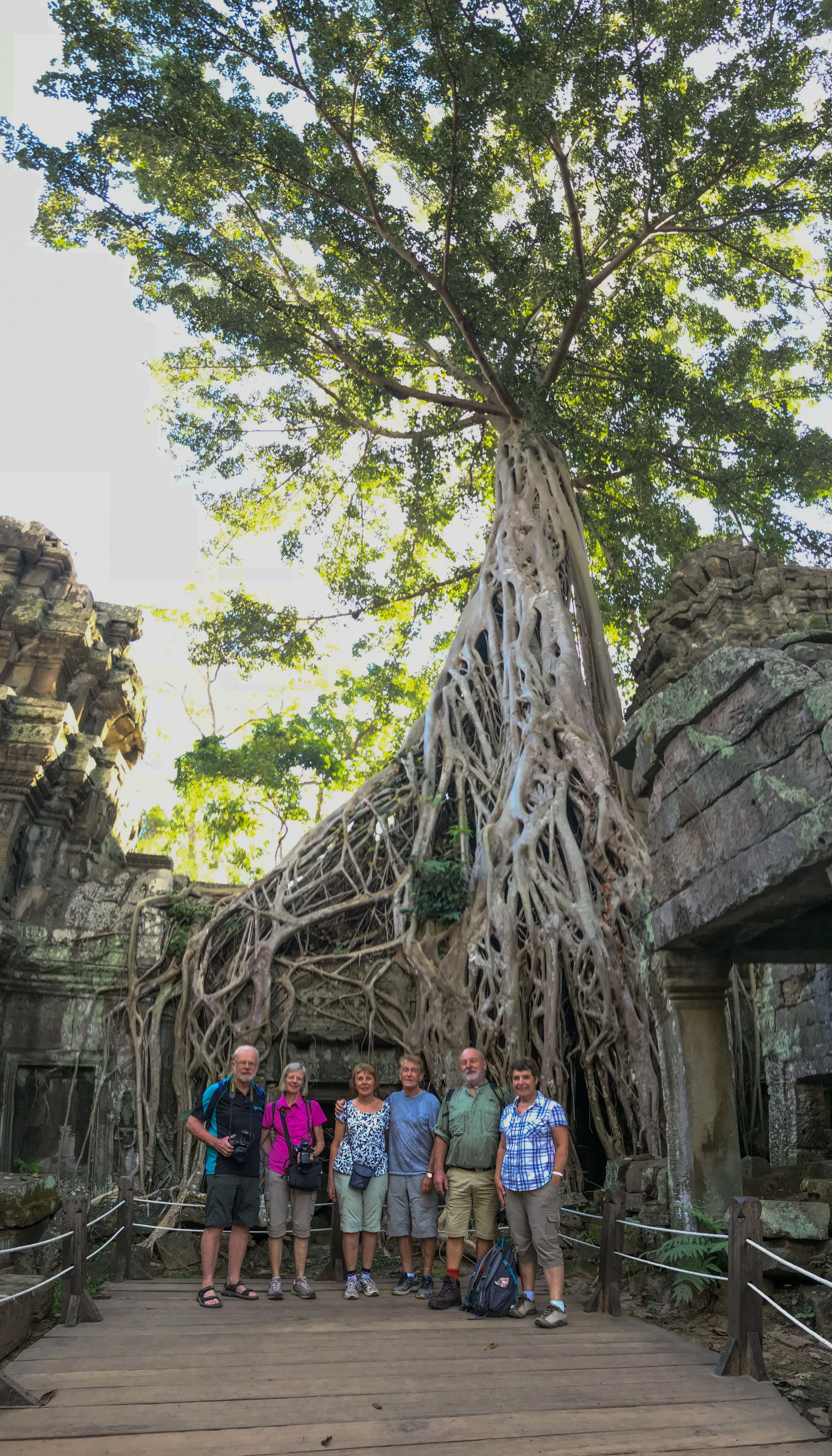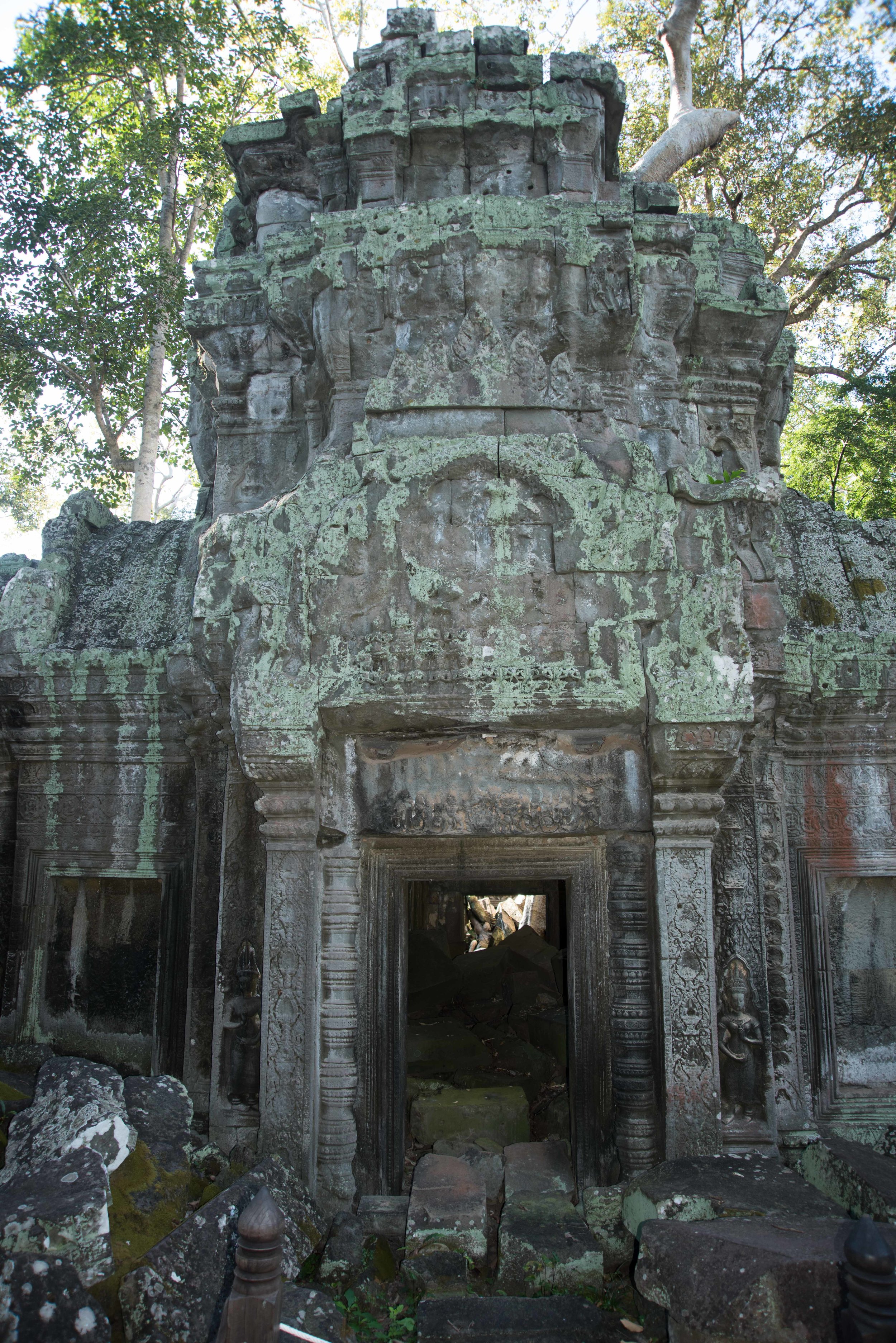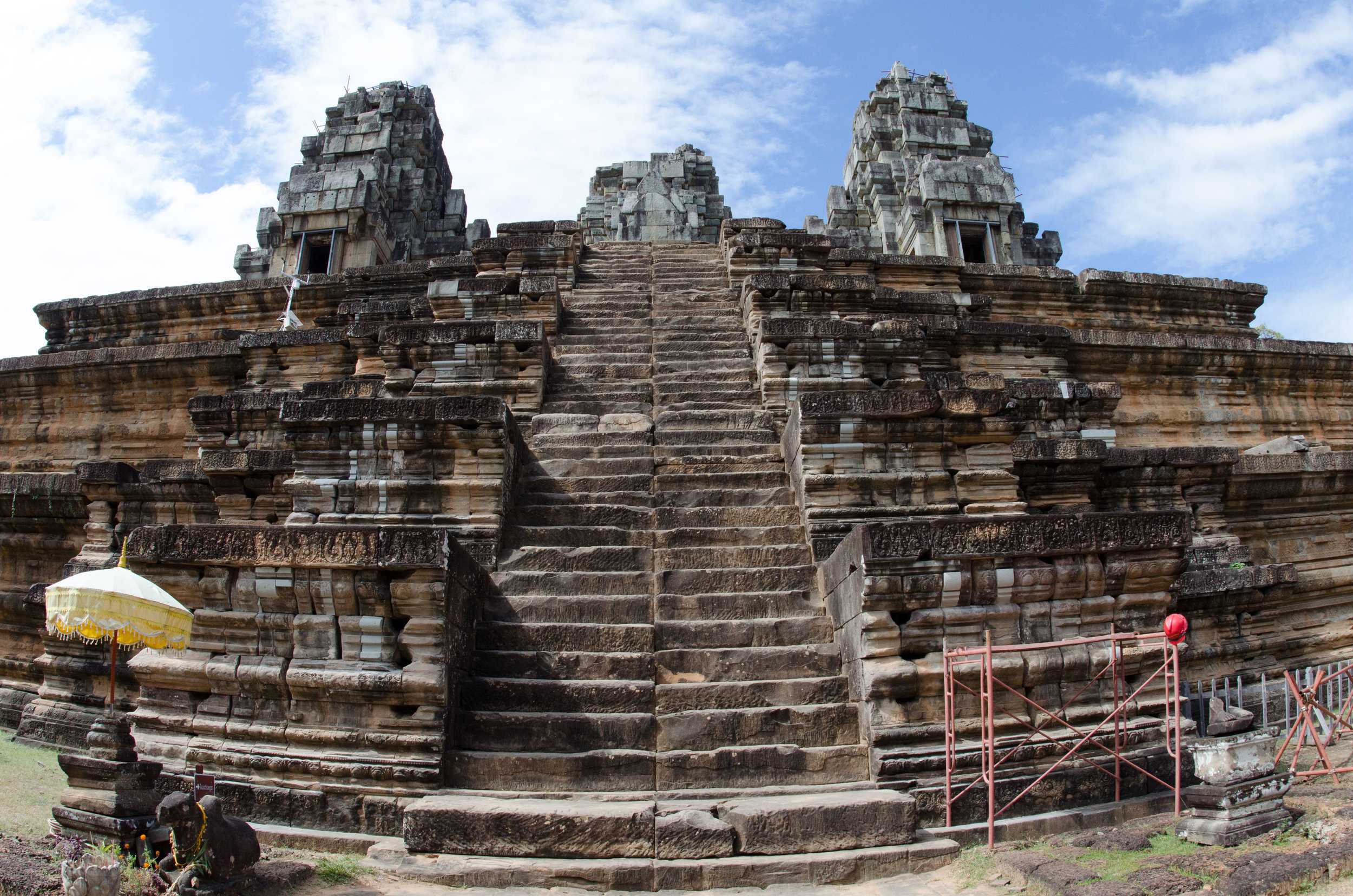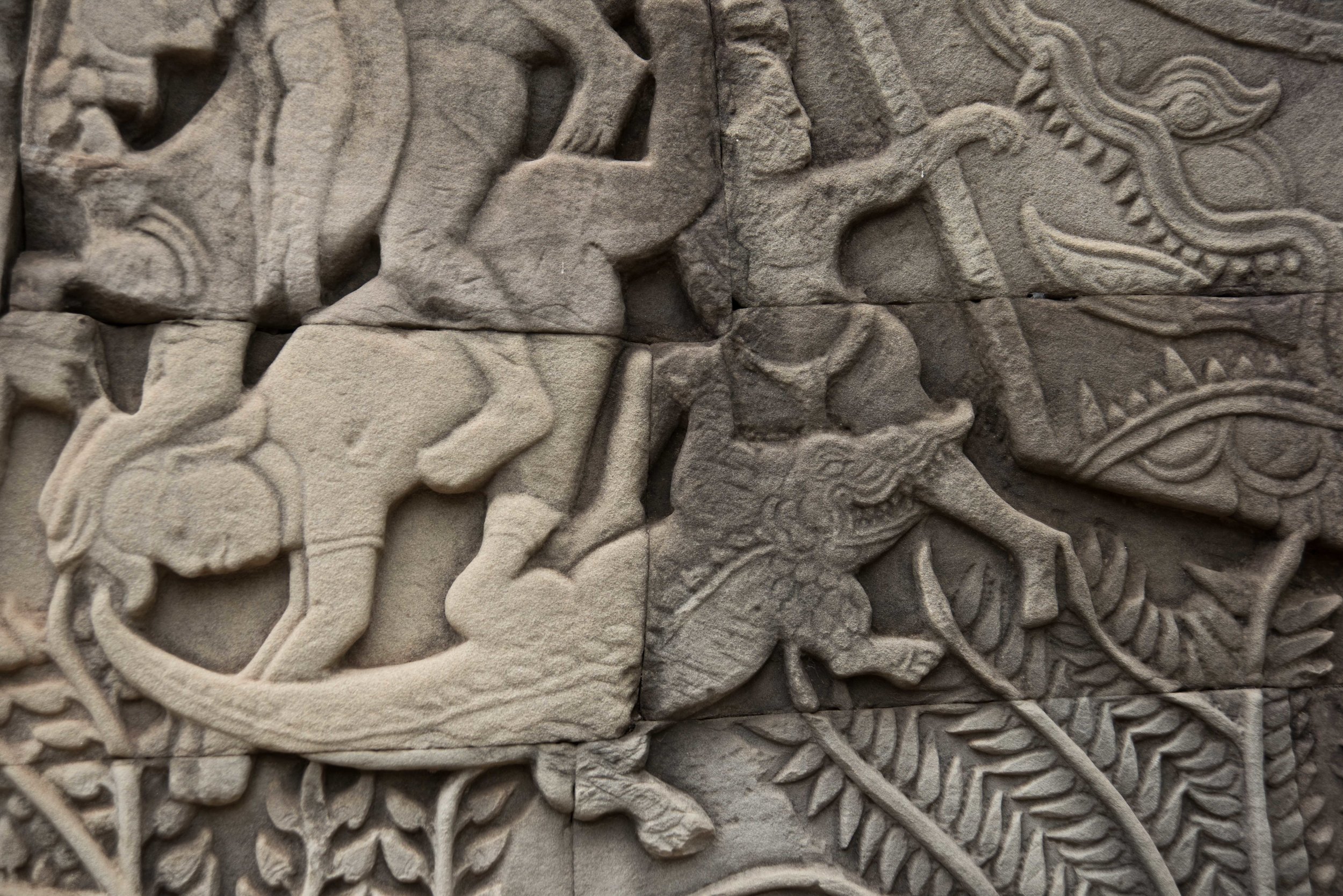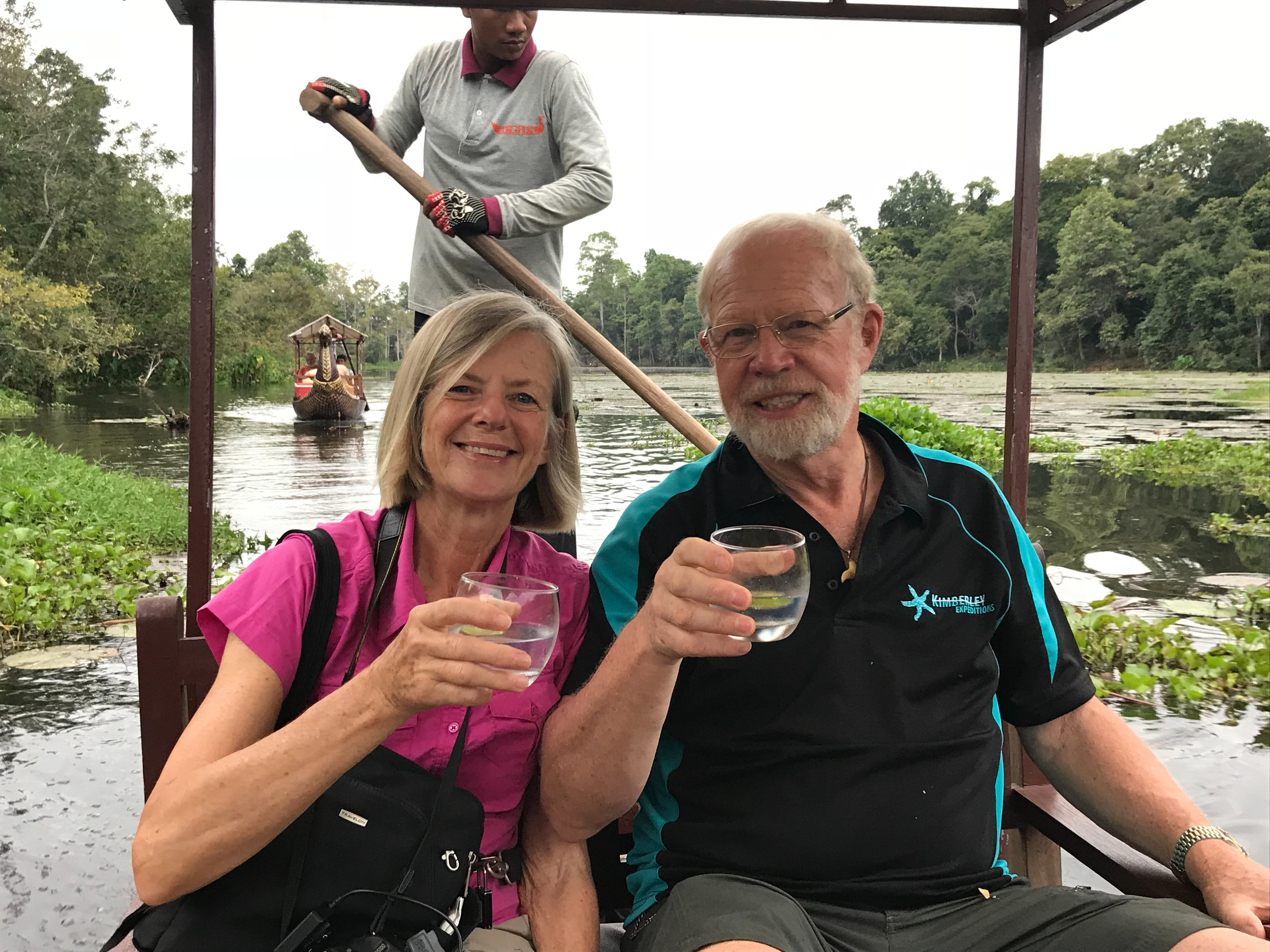Our tour company “About Asia” has a policy of starting each day’s activities very early in order to miss the majority of the crowds and to avoid the midday heat.
We were collected at 06:45 and headed to our first destination called the Ta Prohm Temple regarded by many as the most evocative and mysterious of all the temples at Angkor. The temple buildings cover a large area of around 350 m by 250 m contained within a laterite wall.
Ta Prohm (which means the Ancestor of Brahma) was built during the reign of King Jayavarman VII from 1181 – 1218 and was dedicated to his mother. It seems that for about 500 years this temple was left abandoned until the 19th century colonial period when it was rediscovered and the French commenced archaeological restoration. Indian archaeologists have continued restoration work since 2012.
The restoration was done with a great effort to maintain the structure as they found it and by cutting down as little of the surrounding jungle as possible.
As a consequence the temple buildings remain smothered by the roots of giant banyan trees. A strangler fig has encompassed its host and dominates the temple’s masonry.
The Face Tower has four images of King Jayavarman VII and many of the walls have intricate bas-relief carvings. One narrow stone column in the complex has ornate circles that enclose various animal reliefs. One such carving depicts what appears to be a stegosaurus but it is probably a mystical Hindu beast called a Makara.
The temple has a Buddhist origin but was later to become a Hindu temple and consequently many of the carved images of Buddha have been destroyed or damaged.
This temple was used in parts of the movie Tomb Raider featuring Angelina Jolie long before she became a Hollywood superstar. Since that time she has become a firm patron of Cambodia and has adopted Cambodian children.
After leaving Ta Prohm we walked around a small lake and found to our joy a shady spot where a mid-morning snack had been set up for us. We enjoyed fruits, cold drinks, coffee and croissants; sheer luxury!
Our next site was Ta Nei Temple built in the late 12th century. The temple was hidden in the forest at the end of a narrow dusty road and this isolation meant there were very few visitors as big buses can’t enter this restricted zone. We enjoyed the opportunity to linger in the shade of its surrounding silk cotton trees and take in the archetypical “tumbledown temple” image that was splendid in the dappled light.
The Ta Nei features notable walls and arches decorated with Buddhist inspired carvings that survived the Hindu times of King Jayavarman VIII.
Our final visitation for the morning was to Ta Keo and early 11th century temple. This was built by King Jayavarman V, when at the age of 17, he decided that he needed something to rival the edifice that his father had built.
It is a massive five-layered pyramid 22 m high which has little in the way of adornment as the construction was stopped when a lightning strike was seen as a bad omen. The stone staircase from the main entrance leads to the fourth level and is exceedingly steep. We had to exercise great care especially on descent.
The restoration work done by the Chinese at Ta Keo has involved the use of much steelwork bracing and framing of doorways which presumably gives added strength to the stone block work but severely detracts from the potential magnificence of this temple.
In accordance with Noel Coward we voided the midday sun (Mad dogs & Englishmen etc) and rested until around 13:45 when we resumed our visits and went to Angkor Thom.
This great city was founded by King Jayavarman VII in the late 12th century and at one time was the largest city in the Khmer Empire. The city area is surrounded by an 8.0 m high wall about 12 km long! We visited the East Gate, which is much quieter than the South Gate, and walked for about two kilometres on this wall. The city’s area is about ten square kilometres and has five gates with four facing in the cardinal directions and an extra one on the eastern side. The whole complex is then surrounded by a three metre deep moat approximately a hundred metres wide.
The South Gate is the best preserved of the gates and is flanked by 154 stone statues, gods on the left-hand side and demons on the right side. The gate itself is 23 m high surmounted by a triple tower with four gigantic smiling faces of Buddha (or possibly the king). The gate is flanked by statues of the three headed elephant Erawan which was the fabled mount of the Hindu god Indra.
In the heart of Angkor Thom is The Bayon, one of the city’s most extraordinary structures epitomising the “lost civilization” of the Angkor.
There are 54 towers with 216 huge enigmatic stone faces. The towers are linked by galleries that are in the process of being restored.
The bas-reliefs in the eastern gallery provide scenes from the struggles between the Khmers and the Cham. These stories are told in vivid carved and intricate scenes extending along a 5 m high wall for over 100 m.
On leaving this temple we walked along the Terrace of the Elephants and then the Terrace of the Leper King.
At this point we were becoming a little over-awed with the scenery with there being in our midst, grandiose structures involving over 6 million tonnes of carved rock! It was mind boggling.
Our visit was concluded with a quiet sunset boat trip around three kilometres of the moat. During this sojourn our guide Thay provided us with gins and tonics plus nibbles making for an utterly delightful end to our first day’s visit to the marvels of Angkor.
A sumptuous meal at a nearby restaurant called the Red Piano made for a very pleasant end to a marvellous day.

